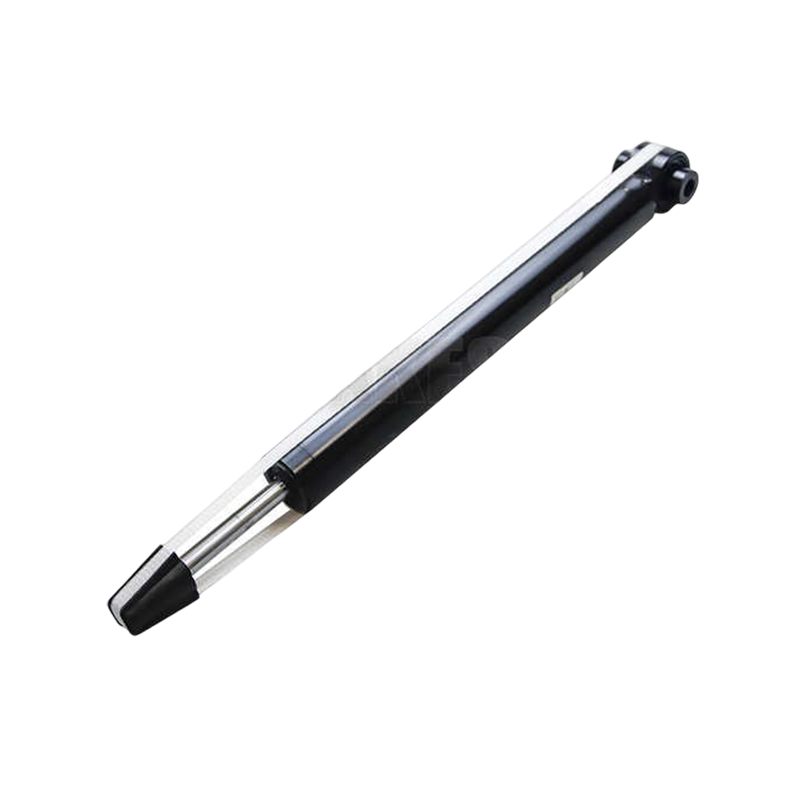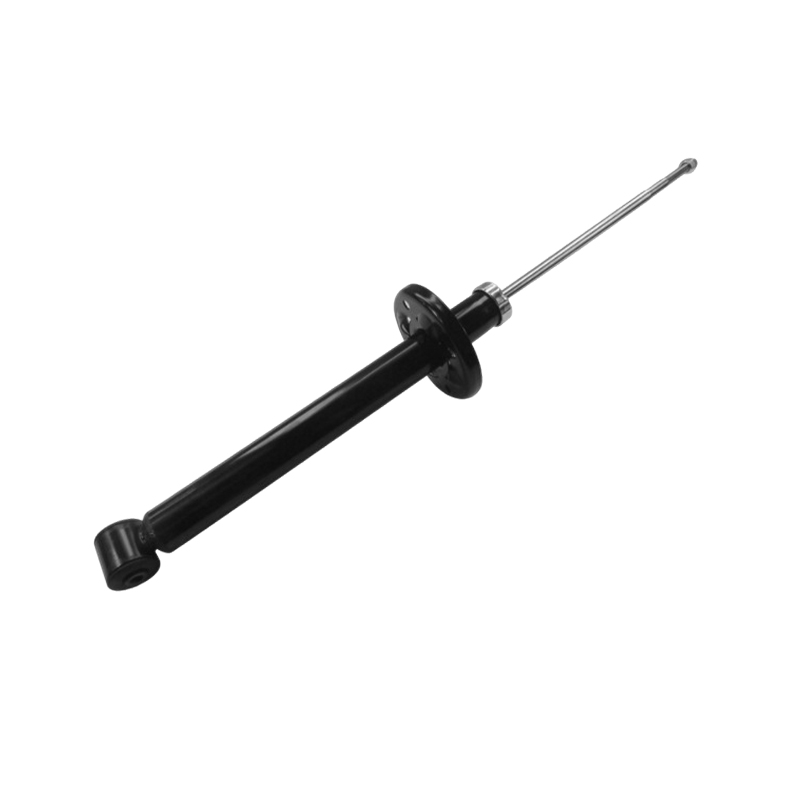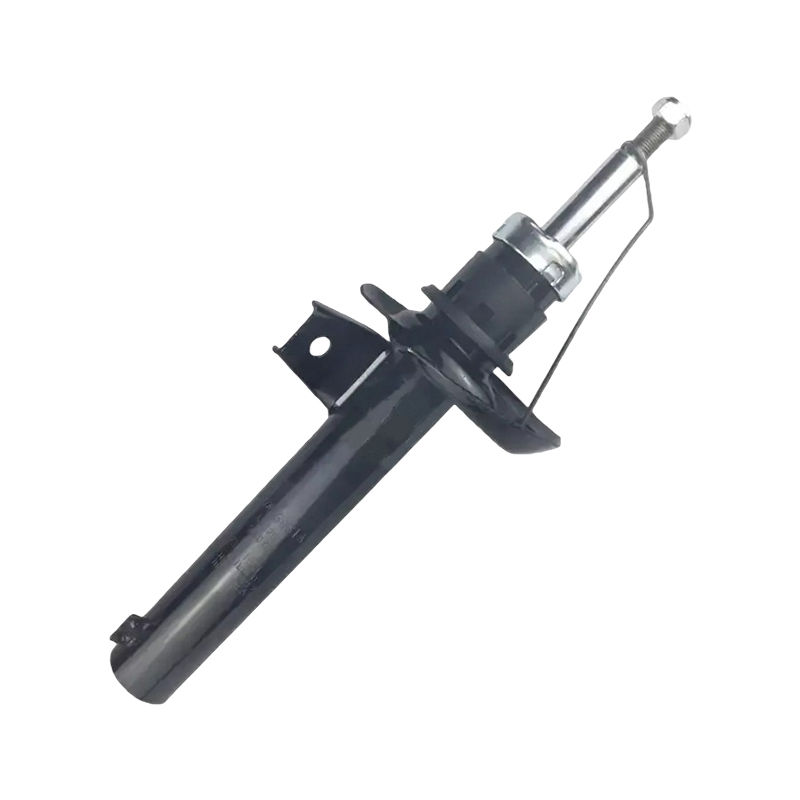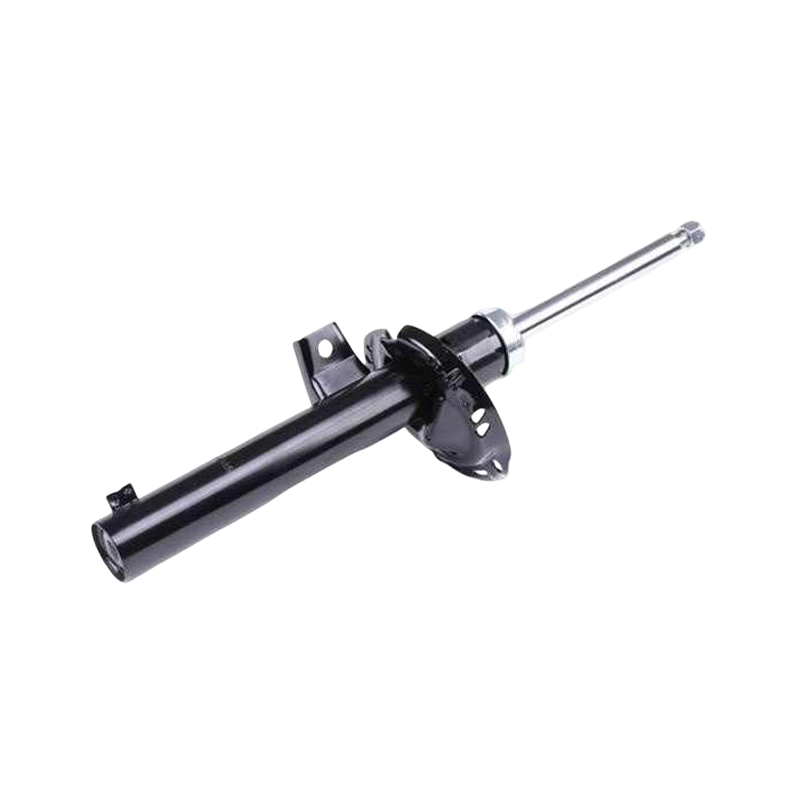How do automotive shock absorbers improve cornering safety?
Release Time : 2025-08-22
Cornering is an inevitable part of everyday driving. Whether it's a gentle curve on a city overpass or a sharp turn on a mountain road, the vehicle's stability and handling are put to the test. Behind this, the automotive shock absorber plays a crucial role. It's not only a key component for enhancing ride comfort, but also an "invisible guardian" of cornering safety.
1. The Basic Function of a Shock Absorber: More Than Just "Shock Absorption"
Many people believe that shock absorbers simply absorb road bumps for a more comfortable ride. In reality, their core function goes far beyond this. By controlling the compression and rebound speeds of the springs, the shock absorber effectively suppresses unwanted vehicle body motion during driving, such as pitch (braking), pitch (acceleration), and roll (body tilting during cornering). This precise control of vehicle posture lays the foundation for stability during cornering.
2. Cornering Challenges: Roll and Tire Grip
When a vehicle enters a corner, centrifugal force causes the vehicle body to tilt outward, a phenomenon known as roll. Excessive roll can lead to two serious problems: excessive load on the outer tires, reducing the grip of the inner tires and even causing them to lift off the ground, resulting in unstable handling; and the suspension system's travel is compressed to its limit, losing its cushioning capacity. This makes it extremely easy to lose control when encountering bumps mid-corner. In this situation, a high-performance shock absorber can quickly respond to the body roll trend by increasing damping force to suppress excessive spring compression and rebound, thereby reducing the body roll angle and maintaining effective tire contact area with the ground.
3. Improving Tire Contact and Ensuring Grip
The tires are the vehicle's only point of contact with the ground, and their grip directly determines the vehicle's cornering limit. Shock absorbers precisely control suspension movement to ensure that all four tires maintain close contact with the ground during cornering. Especially on uneven curves, poor-quality or aged shock absorbers can cause the tires to frequently "jump off the ground," resulting in "skidding" and severely undermining handling confidence. High-performance shock absorbers, on the other hand, quickly absorb vibrations and stabilize the vehicle, ensuring continuous tire grip and significantly improving cornering control and safety.
4. Shorten vehicle recovery time and improve continuous cornering performance
Negotiating continuous corners or changing lanes to overtake requires frequent weight shifts. If the shock absorber's damping performance is insufficient, the vehicle body will continue to shake after completing a corner, failing to quickly regain a stable position. This can lead to sluggish handling in the next corner and even cause understeer or oversteer. High-quality shock absorbers offer faster response and more optimal damping, quickly "holding" the vehicle body, shortening the adjustment time and allowing the driver to more confidently navigate complex road conditions.
5. Prevent brake nodding and optimize cornering stability
Slowing down before cornering is often necessary, and sudden braking can cause the front of the vehicle to drop significantly (known as "nodding"). If the front-end damping of the shock absorber is too weak, this nodding can exacerbate front suspension compression, affecting front wheel steering precision and even causing steering delay. High-performance shock absorbers effectively suppress brake nodding by optimizing compression damping, maintaining vehicle balance and allowing the vehicle to enter corners more stably, improving overall handling safety.
Although hidden inside the wheel, the shock absorber silently safeguards driving safety during every turn. It suppresses roll, stabilizes the vehicle, enhances tire grip, and accelerates vehicle recovery, comprehensively improving the vehicle's cornering stability and handling limits. Regularly checking the condition of the shock absorber and promptly replacing aging or failed components is not only responsible for the driving experience but also essential for safety.
1. The Basic Function of a Shock Absorber: More Than Just "Shock Absorption"
Many people believe that shock absorbers simply absorb road bumps for a more comfortable ride. In reality, their core function goes far beyond this. By controlling the compression and rebound speeds of the springs, the shock absorber effectively suppresses unwanted vehicle body motion during driving, such as pitch (braking), pitch (acceleration), and roll (body tilting during cornering). This precise control of vehicle posture lays the foundation for stability during cornering.
2. Cornering Challenges: Roll and Tire Grip
When a vehicle enters a corner, centrifugal force causes the vehicle body to tilt outward, a phenomenon known as roll. Excessive roll can lead to two serious problems: excessive load on the outer tires, reducing the grip of the inner tires and even causing them to lift off the ground, resulting in unstable handling; and the suspension system's travel is compressed to its limit, losing its cushioning capacity. This makes it extremely easy to lose control when encountering bumps mid-corner. In this situation, a high-performance shock absorber can quickly respond to the body roll trend by increasing damping force to suppress excessive spring compression and rebound, thereby reducing the body roll angle and maintaining effective tire contact area with the ground.
3. Improving Tire Contact and Ensuring Grip
The tires are the vehicle's only point of contact with the ground, and their grip directly determines the vehicle's cornering limit. Shock absorbers precisely control suspension movement to ensure that all four tires maintain close contact with the ground during cornering. Especially on uneven curves, poor-quality or aged shock absorbers can cause the tires to frequently "jump off the ground," resulting in "skidding" and severely undermining handling confidence. High-performance shock absorbers, on the other hand, quickly absorb vibrations and stabilize the vehicle, ensuring continuous tire grip and significantly improving cornering control and safety.
4. Shorten vehicle recovery time and improve continuous cornering performance
Negotiating continuous corners or changing lanes to overtake requires frequent weight shifts. If the shock absorber's damping performance is insufficient, the vehicle body will continue to shake after completing a corner, failing to quickly regain a stable position. This can lead to sluggish handling in the next corner and even cause understeer or oversteer. High-quality shock absorbers offer faster response and more optimal damping, quickly "holding" the vehicle body, shortening the adjustment time and allowing the driver to more confidently navigate complex road conditions.
5. Prevent brake nodding and optimize cornering stability
Slowing down before cornering is often necessary, and sudden braking can cause the front of the vehicle to drop significantly (known as "nodding"). If the front-end damping of the shock absorber is too weak, this nodding can exacerbate front suspension compression, affecting front wheel steering precision and even causing steering delay. High-performance shock absorbers effectively suppress brake nodding by optimizing compression damping, maintaining vehicle balance and allowing the vehicle to enter corners more stably, improving overall handling safety.
Although hidden inside the wheel, the shock absorber silently safeguards driving safety during every turn. It suppresses roll, stabilizes the vehicle, enhances tire grip, and accelerates vehicle recovery, comprehensively improving the vehicle's cornering stability and handling limits. Regularly checking the condition of the shock absorber and promptly replacing aging or failed components is not only responsible for the driving experience but also essential for safety.







